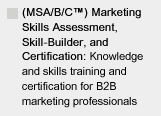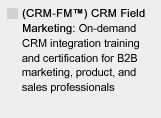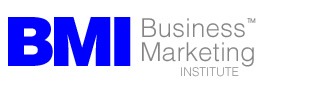MAKE SURE YOU CONTINUE TO RECEIVE EACH ISSUE OF TUESDAY MARKETING NOTES—CLICK HERE TO RENEW YOUR FREE SUBSCRIPTION
First Sentence Syndrome: Deadly to E-Mail
By Ardath Albee, CEO, Marketing Interactions, Inc.
If your inbox looks anything like mine, you're scanning and deleting your email rapidly, trying to sort through it all and find the stuff you need - as quickly as possible.
The preview pane is a wonderful screening tool. Subject lines are often misleading so I tend to scan the opening sentence to see if I want to delete or continue. I want to know immediately if the message is relevant to me. Unfortunately, not many of those sentences get my attention.
To put this in context, let's look at some real email first sentences:
"I wanted to share with you the success of our [company] program which allows marketers to tap an influential group of [company's] readers for product sampling and reviews."
Really? Why? I don't know you. I don't know who your readers are, or what they could mean for me.
"I've been trying to contact you regarding your interest in the business implications of social media."
You have? First I've ever heard of you. So, if you've tried before, you didn't make any better of an impression. And why are you trying to make me feel like I failed to respond to you when I don't know you?
"[Company] has spent years perfecting its product for small businesses, leading to awards for both the company and the product, and attracting more than 40,000 customers."
Woo Hoo! Good for you. So?
"If [Company] has its way, every last one of us will be communicating with video as naturally and regularly as we now use email and our phones, no matter what industry we work in."
Good luck. What does this have to do with me? Although this one got my attention with the boldness, but soon lost it again with the five long paragraphs of dense stuff that followed - which was all about them.
And that's the missing for each of these. Every single first sentence here is all about the sender.
• There's no consideration evident about me.
• No reason at all for me to keep reading.
• Nothing relevant to anything I'm thinking about right now.
• No attempt to engage me.
All of them are speaking AT me, not WITH me. The problem gets even worse. I have one of two possible responses. Both result in DELETE.
Disinterest - I've deleted your message. You're gone from my mind immediately with no residual value for you to build upon - even if you wanted to try. The good thing here is that you have a clean slate to start again. Unless, I've blocked your access to my inbox.
Dislike - The tone and words caused me to want to hit reply and tell you how much you irritated me. But, I didn't. I have no time for that. I deleted your message. But I'll remember the bad impression you made and will be predisposed not to pay attention to anything else you send. But I probably won't know because you've just been blocked.
There are a number of articles, reports and research out there that say email effectiveness is declining. Or that email is dead. Don't believe it. Email is a valuable tool. One that all of us use every single day.
The reason response rates are not impressive for a lot of companies isn't due to the technology, or the delivery method. It's the message companies choose to put into it.
It's worth taking the time to think about who your audience is and what you're saying to them...and why.
If you want better response:
• Focus on your audience, not your company, yourself or your products.
• Segment based on expressed interests.
• Don't make assumptions without basis.
• Start with a great hook.
• Be interesting (add value), for heaven's sake.
• Don't try to sell me at hello.
Let's take a look at some examples of revisions made to a couple of the first sentences above that flips the focus from the company sending the message to the audience receiving it.
From the first example above . . .
"I wanted to share with you the success of our [company] program which allows marketers to tap an influential group of [company's] readers for product sampling and reviews."
Improve this first sentence by refocusing on the value from the lead's perspective:
Wouldn't it be great to know what your target market thinks about your new products before you launch?
I'd keep reading to learn more. Starting with a question that hits home pulls the reader forward into the message. Then expand into how closely aligned their messaging can be to their target market's interests and priorities.
For this second example from above . . .
"I've been trying to contact you regarding your interest in the business implications of social media."
Once again, begin with a value the lead is likely interested in achieving. Positive and upbeat is the tone to strive for:
Social media has proven to have a huge impact on extending customer loyalty and increasing satisfaction levels--when it's done with the customer in mind.
Instead of just mentioning the "business implications of social media" give them an idea about what those might be. If you know someone's looking at solutions with a goal in mind, address that first.
Then expand the message to include some ideas or examples about how companies like theirs have reaped those benefits from how they've implemented social media. Be the expert your audience needs to help them think about and evaluate their options for implementing social media.
Much better than chastising me for not responding to previous emails, don't you think?
Hopefully, these rewrite examples have helped to demonstrate the difference that can be made in the impact of a first sentence. By following these three tips, you’ll generate hooks that catch your audience’s attention:
• Start with something interesting to your audience.
• Show you've done your homework.
• Give them an idea of why it's important for them to read further.
Ardath Albee (Ardath@marketinginteractions.com) is an expert at creating contagious content and e-marketing strategies that engage prospects-from initial attention until they're sales ready. She has a unique ability to develop content strategies that work hand-in-glove with overall corporate
and product positioning to deliver hard hitting e-marketing programs and tools that compel customers to buy. Ardath helps her clients generate more opportunities by optimizing how they leverage marketing automation and CRM technology investments. Her clients include Covad Communications, LANDesk and Silicon Graphics. Visit her website and industry-leading blog to learn more: www.marketinginteractions.com.







